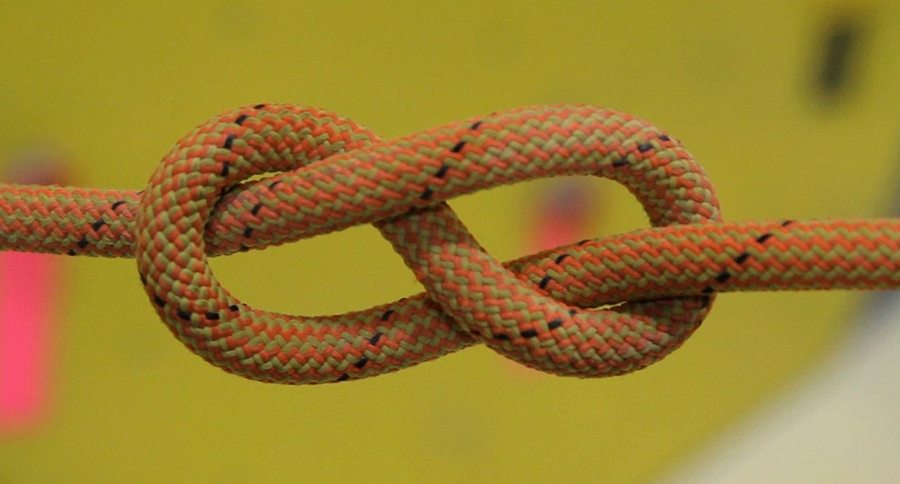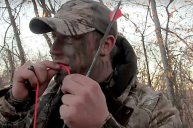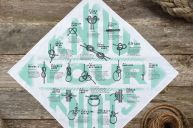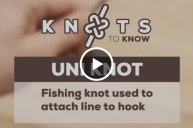There is a time in everyone's life when they come to a realization about who they really are. Dear readers, that day is today for me. I stand here steadfast and proudly proclaim that I am a Knothead.
That's right, I love knots. Knots and other forms of rope work fascinate me. I know that there are others out there like me. Some are afflicted more than I and some less, no doubt. However, we are all Knotheads and it is time we stand and be recognized.
It is possible that you suffer from this same malady and may not realize it. The fact is, you may not even know what a knot is. I want to help you understand knots and recognize the symptoms of being a Knothead.
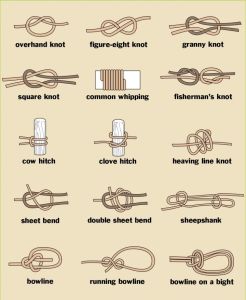
Image courtesy Pinterest
A knot, strictly speaking, is anything that is not a hitch or a bend. That makes it crystal clear, doesn't it? Okay, perhaps not. Knots include bindings, shortenings (shortening a piece of rope without cutting), stoppers, loops and even nooses. Many times bends and hitches are called knots even though they really aren't. This is due to continued references by users over the years.
A bend is the joining of two pieces of ropes by tying instead of splicing because the expectation is to separate them later. While a hitch attaches a rope to a hook, post, ring, etc. Hitches normally are intended to handle a load of weight while being easily untied.
Knot terms filter into our everyday life. People get hitched or tie the knot. I much prefer the latter, since it binds together and the former is easily undone.

Image courtesy Pinterest
In today's age of ratchet straps or other forms of mechanical securing devices, knotting has become a skill seldom used outside of our shoes... and Velcro even seeps into that arena. However, knotting is an important skill to learn. There are a few basic knots and hitches that can be used for securing a variety of things.
Square Knot (aka Reef Knot)
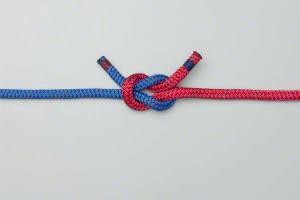
Image courtesy Animated Knots
This knot goes back to the days of Pliny the Elder (a writer who lived between 23-79BC). He wrote that binding a wound with a Hercules Knot would make it heal quicker. This Hercules Knot is what we now call a Square Knot or Reef Knot. Even today in learning first aid, you tie a square knot overtop of a wound when you need to apply pressure.
Bowline
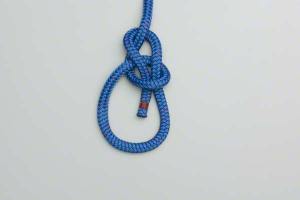
Image courtesy Animated Knots
The bowline is a great and well known knot among seafaring sorts. It holds fast and is strong without binding too tightly. It works well on synthetic rope as well as natural and has come to be used in rappelling and climbing circles.
Two Half-hitches
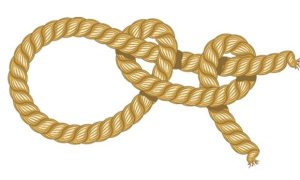
Image courtesy Guardian
The half hitch by itself is used for securing long cylindrical packages. When doubled, this little hitch is great for securing loads on the back of trucks and as added security on a bowline or other knot.
Overhand Knot

Image courtesy Fire Mountain Gems
Almost every pre-schooler can tie this basic knot. It is also called a thumb knot. It is a great stopper knot on the end of string, rope or sewing thread. An overhand is also a quick alternative to whipping the end of the rope to prevent fraying.
Whatever the knot is you use, be sure to learn eight to ten basic ones. A length of rope should be a part of your basic gear for the outdoors. But it does you no good to have the rope, if you do not know how to use it.
As you venture out into the woods this season, remember this: Be proud to be a Knothead. Come join the ranks of Knotheads everywhere. There are many ways to enjoy your personal and family time. No matter how you choose to spend your time this season, don't leave the outdoors out. Make it a part of every season.
NEXT: THE 6 BEST S'MORES RECIPES KNOWN TO MAN
